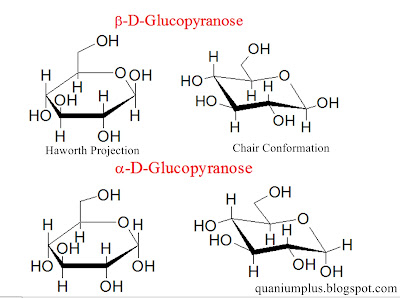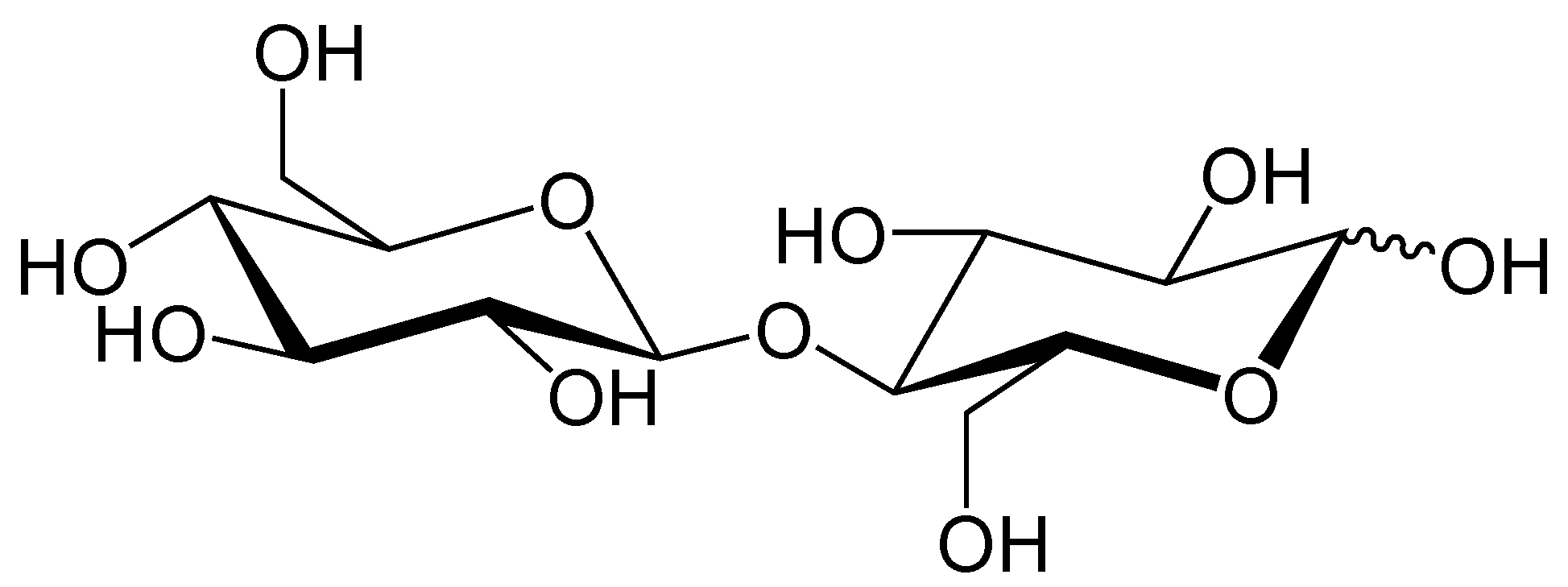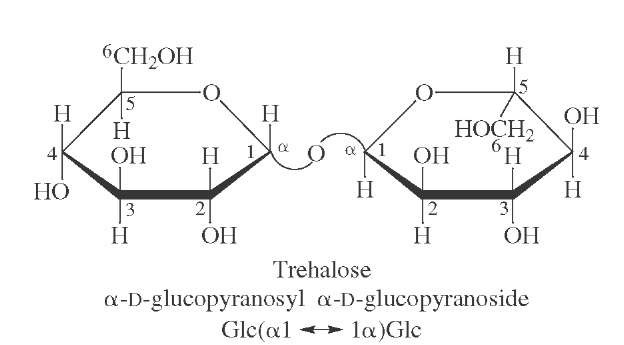MONOSACCHARIDE
Glucose
Glucose (or Glucopyranose) is the most common sugars which has two different form, alpha and beta.
 |
| α-D-Glucose and β-D-Glucose |
Galactose is similar to Glucose, however, the fourth hydroxide on the ring projects upward
A furanose ring structure with six carbons or (hexose)
Ribose
N-acetylglucosamine (NAG)
It is a glucose with a "peptide-like" bond attaches on the second carbon
β-D-Glucuronate
α-D-Galactose and β-D-Galactose
FructoseA furanose ring structure with six carbons or (hexose)
 |
| α-D-Fructose and β-D-Fructose |
A furanose ring structure with five carbons or (pentose)
 |
| α-D-Ribose and β-D-Ribose |
It is a glucose with a "peptide-like" bond attaches on the second carbon
 |
| N-acetylglucosamine |
 |
| β-D-Glucuronate |
DISACCHARIDE
Amylose (2 and more α-glucose)
Cellobiose (2 β-glucose)
It is a disaccharide which is created by α 1->4 glycosidic linkage.
The structure of amylose is a left handed helix, 6 glucoses/ turn, and -CH2OH groups project outward
 |
| Two different projections of Amylose |
It is created by β 1-> 4 glycosidic linkage. With more than 2 glucose, this chain will form Cellulose
β-D-Lactose (β-Galactose and β-Glucose)
A sugar that found in milk, which is created by a β 1->4 glycosidic linkage
Sucrose (α-Glucose and β-Fructose)
 |
| Chair Conformation of Cellobiose Source: http://nl.wikipedia.org/wiki/Bestand:Cellobiose_skeletal.png |
 |
| Cellobiose |
A sugar that found in milk, which is created by a β 1->4 glycosidic linkage
 |
| Lactose molecules Source: http://www.edinformatics.com/math_science/science_of_cooking/lactose.htm |
Notice that the fructose molecule need to rotate to the left 180 degrees, around the z-axis (the axis that projects out of the plane). It is a non reducing sugar.
 |
| Sucrose Source: http://users.bergen.org/dondew/bio/AnP/Anp1/AnP1Tri1/CARB_ART/SUCROSE_SYNTH/SucroseSynth.html |
It is animal blood sugar which is linked by α 1->1 glycosidic linkage
Note: The right handed side glucose must rotate 180 degree to the left around the z-axis (the axis that projects out of the plane).
 |
| Trehalose Haworth projection Source: http://what-when-how.com/glycoconjugates-and-carbohydrates/polysaccharides-glycoconjugates-and-carbohydrates/ |
Source: Dr. Larry Jon Friesen' s Lectures


No comments:
Post a Comment